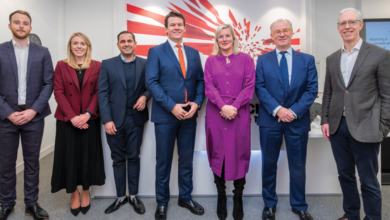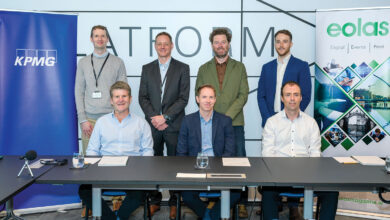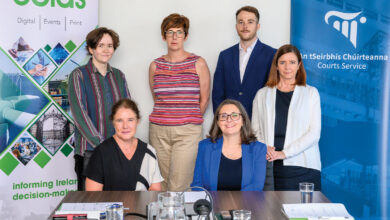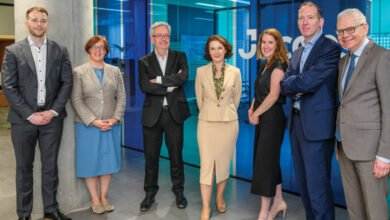Delivering a great customer experience in a connected age
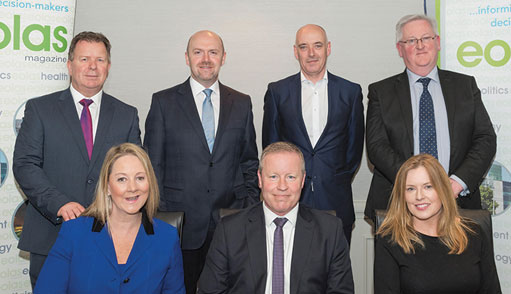
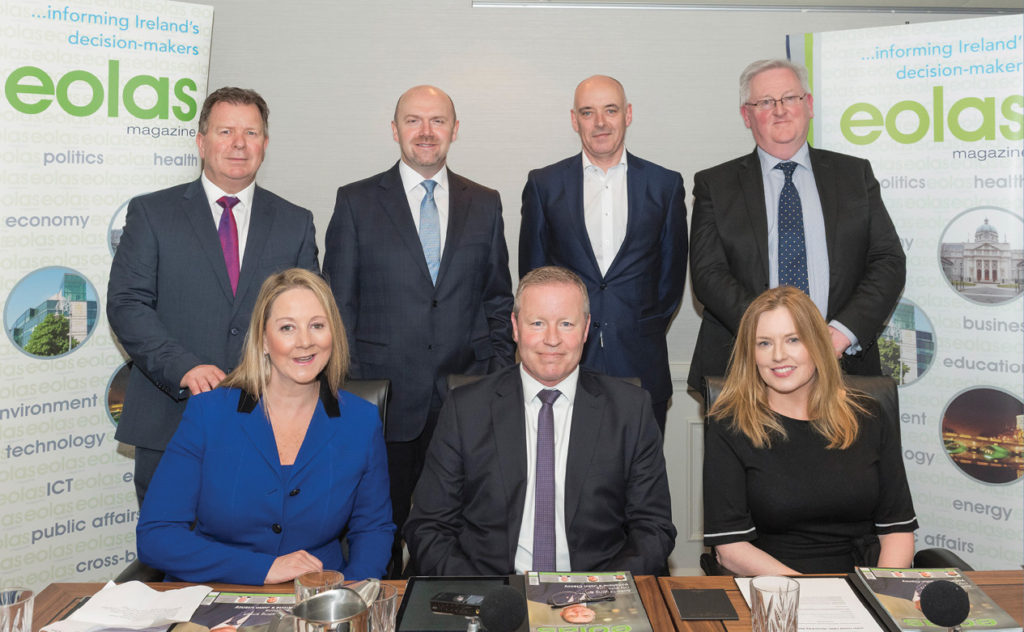
Abtran hosted a round table discussion on the challenges and advantages of delivering a fully connected customer experience in an increasingly digital era.
What are the key opportunities for your business in delivering a fully connected customer experience?
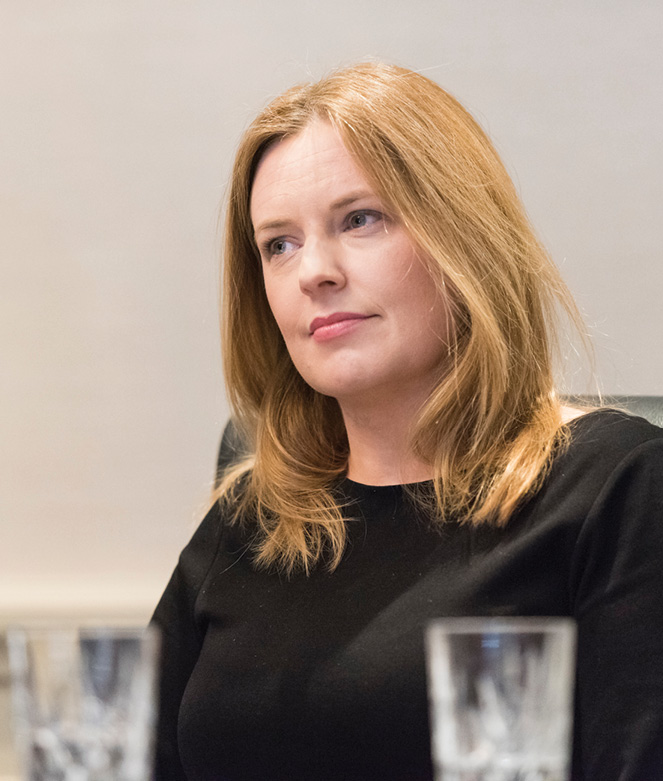
Yvonne Byrne
Engagement is key. By increasing the number of interactions with our customers we drive connectivity which in turn leads to growth, cooperation and cost efficiencies.
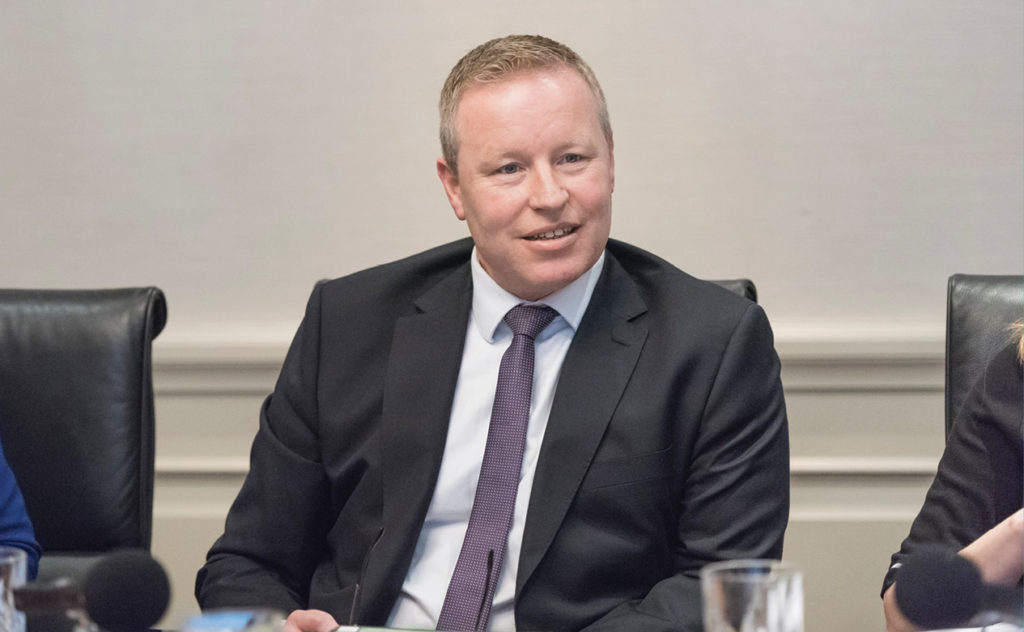
Brian Woods
The key elements of great customer service have not really changed but in a connected world it has become more challenging particularly as power has shifted to the customer and they want to be served on their terms. Companies who recognise this are the ones who will succeed by offering their customers a simplified, personalised and interactive service experience. This “connectedness” is an opportunity for companies to focus on the full customer journey and how its experienced across multiple functions and channels and not just at the various touch points along the journey. As a result, companies can differentiate in highly competitive markets and also maximise the lifetime value of their customers.
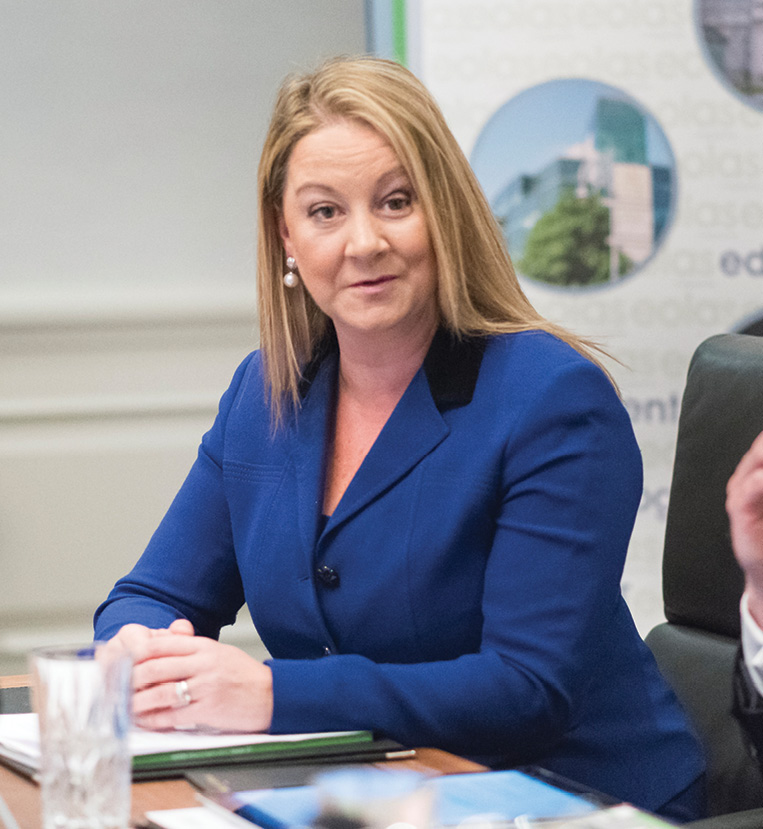
Tracy Kennedy
Our drive is to improve overall customer experience through a range of initiatives, one of which includes migrating customers to quad play bundles, offering us the opportunity to look at the whole customer experience through the lens of the customer proposition, including service and value for money. In addition to that we are looking at new products. Things like guest WiFi and WiFi Calling, which will see all our customers being able to benefit from a converged network. From a customer experience standpoint, this will provide a one stop shop in terms of all our customer touch points.
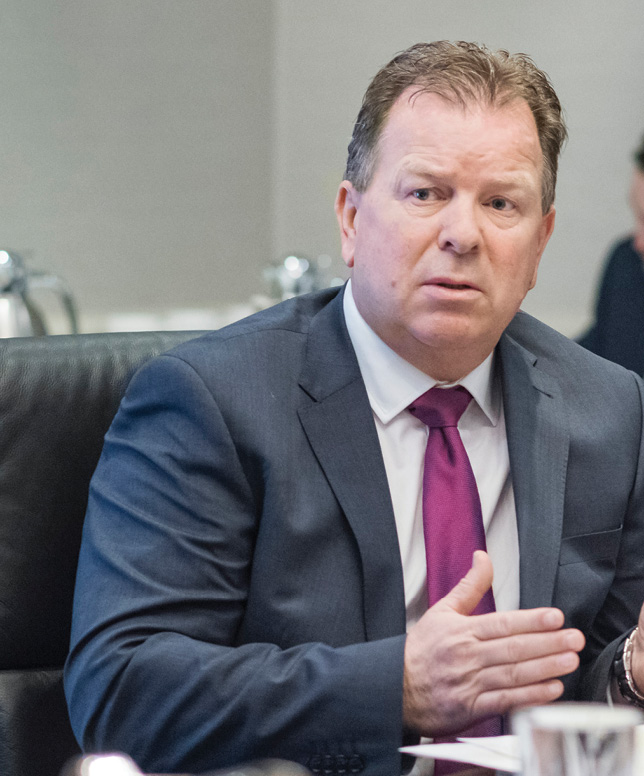
Niall Dineen
Broadly we are trying to get a consistency of approach. We are in a very competitive energy environment and our challenge is quality and relevant information gathered from the various channels. Working on an integrated database means that we can capture customer information at every point of contact and this helps us understand their requirements, but also anticipate what is coming down the line. As control switches to the customer, a fully consistent customer experience means offering the simplest and easiest route to interact with us but also that we are ready when they do interact. The benefit for us is happier customers which means better loyalty and retention.
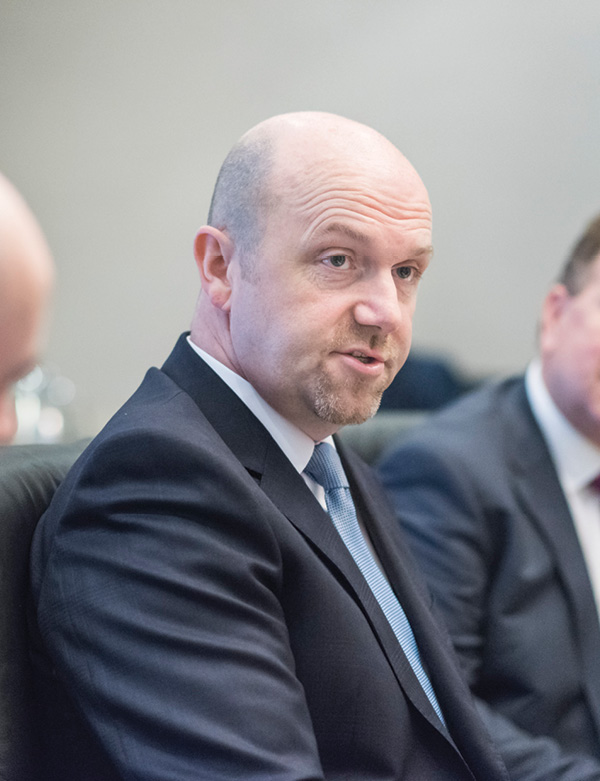
David Kelly
As a multi-utility, a key opportunity for us around connectivity lies in the advent of social media and the opening of a real-time channel of interaction. As well as responding to the customer we can also proactively inform people where there is a planned or unplanned outage for example. Connecting with people digitally is something we are very engaged with.
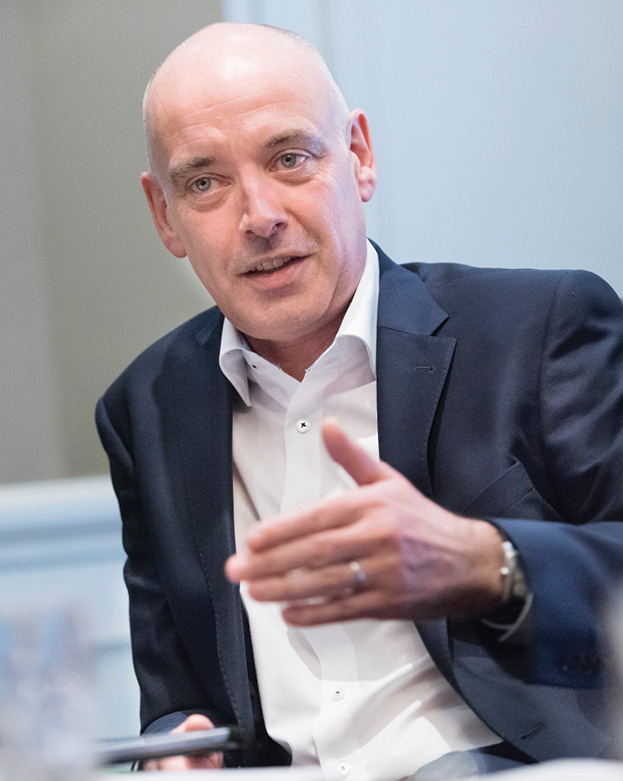
Frank O’Donnell
A connected experience for our customers is at the heart of what we do as a tech company. Our customers range from individuals to large enterprises and so a key focus for us is delivering a consistency of experience. Online we have developed communities to help users engage around individual products from development right through to post-sale support. But we also offer one-to-one interaction with customers that are at the premier end of our engagement in terms of services. Consistency in connectedness is a big emphasis for us.
With today’s empowered customers expecting personalised, digital experiences, what strategies have you adopted to make them feel valued?
David Kelly
Utilisation of new technologies is important for Ervia. For our gas business, operating as a wholesale gas supplier, we have to compete with other forms of energy and what we are currently doing is developing our website and customer relations management (CRM) capability to ensure that when people are considering moving to gas they have all of the information available to them.
Tracy Kennedy
In the consumer market, we are obviously keen to deliver all the telecommunications requirements of an individual. We now look at an individual in the context of the household that they are part of and create propositions that are value-orientated and specific to them. From a large business perspective, we pride ourselves on the fact that we are best-placed in the market to create a bespoke deal for the customer. We are very much about the personalised approach to creating a solution that meets the needs of the individual engaged in dialogue with us.
Yvonne Byrne
Optimisation of big data is key to making a customer feel valued. We’ve witnessed a move by financial services in Australia or utilities in the UK, for example, driving engagement and loyalty with their customer by using their data to match them with similar users. This benchmarking offers transparent comparisons and potentially saves the customer money. The result is a reduction of attrition and is done largely by utilising the data which the company already holds.
Niall Dineen
Data analytics is a space we have invested in heavily and that investment is now coming to fruition. Customer segmentation has allowed us to identify and personalise our customer interaction. For the customer, the ability to access energy consumption, view price plans and even switch properties is empowering and gives the customer more control. We hope by offering people this service and information through a variety of channels then we are more likely to retain them.
Brian Woods
The customer is at the centre of everything we do and ‘Make it Easy’ is our brand promise! With a relentless focus on quality and training, we strive to ensure our staff are brand ambassadors for our clients and also empowered to take initiative where appropriate. Something we also do a lot with our clients is emphasising their need to understand customer journey mapping and taking a holistic view of the end to end customer journey, not just of the various touch points along the way. It’s simplistic but putting yourself in the customer’s shoes to improve or enhance their journey is important. Data and analytic insights are also fundamental to an enhanced, personalised customer experience as is ‘closing the loop’ on various metrics such as CSat and NPS and not just measuring for the sake of it.
Frank O’Donnell
That’s important to us in terms of understanding how our customers are using our solutions. We are moving from providing specific point solutions to being with them on that journey, from their initial need right through to getting a genuine business benefit from our solutions. Through digital we are trying to understand what they are doing with, and how they are using, our solutions so that we can offer advice on how to better leverage or exploit it to their benefit.
Are consumers the most disruptive force facing businesses today, not technology?
David Kelly
Both technology and the customer can be disruptive but in serving the customers’ needs you must recognise the variety of your customer base. There is a cohort of society that aren’t necessarily au fait with technology and the digital revolution that is underway. We are conscious as an organisation of looking after the vulnerable, particularly the elderly in this case, and making sure we offer a range of contact channels.
Brian Woods
To me technology is an enabler and customers have the potential to be more disruptive. When you look at market trends, customer demands are increasing, how they engage and when they want to engage is changing. If you fail to recognise this, then you are likely to lose customers to a supplier who will serve them on their terms.
Frank O’Donnell
I see disruption in this sphere as a positive thing. What technology allows is for the customer to get closer to us and for us to understand a lot more about their needs. If you don’t understand a customer’s needs than you can’t provide good customer service. Technology might appear disruptive but it is helping and enabling the conservation between customer and service provider.
Tracy Kennedy
I agree with David that there needs to be a balance in the service we offer considering the wide variety of customer profile. We are very much about Ireland Inc. Unlike our competitors our world is Ireland. We see ourselves as having a role to provide great service to all customers. This includes the millennials who want the best of technology but we also want to provide the opportunity for all generations to transition into that disruptive technology space and adopt it. One example of this is the role eir plays in the annual Silver Surfer Awards, celebrating older people who have embraced technology and those who support them.
David Kelly
I think the key word is choice. Regardless of whether it is disruptive or positive, it is change. I think if you are catering for people to choose their preferred channel of communication, we are in a good place generally.
Yvonne Byrne
Interestingly, while we often regard the millennials as the drivers of change to digital, recent research we carried out in relation to the financial sector highlighted that even they only want technology to a certain point. Looking at things like mortgages and pensions they are probably the generation that are least educated in this space and they want a personalised experience to bring them through that journey. So, whether it’s the socially vulnerable or the millennials, there will always have to be a mix of channels because it’s about choice.
Niall Dineen
I think it very much depends on your customer base. Some companies only chase the digital space and can operate there perfectly well. Companies like ourselves however, have a broad base of customers and we have responsibility to all of them. We have customers who pay their bills to us through the post-office or use prepay meters, we’d love to be able to transition them to digital because it is a much easier process but that wouldn’t be catering to their needs. Offering a range of channels is crucial.
What do you see as the key obstacles and challenges in delivering a fully connected customer experience?
David Kelly
Cost is a factor. For a state-owned company like ours, where tax payers’ money is involved, we need to make sure there is a return for the shareholder in everything we do. Advances must be customer-led and what is important for us when making these significant investments is whether it is going to enhance the human touch element. Whether you are a millennial or an octogenarian, the human touch is important. In our business especially, when dealing with outages and face to face repairs, it’s important to ensure that the customer feels they are valued around these interactions.
Brian Woods
Functional alignment right across the company is key. Delivering a better customer experience must come from the top down and everyone needs to buy in to that philosophy and recognise the value it brings to the business. The ethos must permeate the whole company and be backed by investment where necessary otherwise it will not work. It’s very much a cultural thing.
David Kelly
That raises a healthy tension we currently have in the gas industry. With gas being a highly dangerous substance, safety is key and our safety culture in Ervia is critical. Our Customer First programme, which is running at the minute, puts the customer at the heart of everything we do. There is a natural tension therefore between whether safety is more important than the customer’s expectations and vice versa. The reality is that they are both very important but a challenge is ensuring that we manage our customer interactions safely.
Niall Dineen
Competition drives customer focus. If you want to hold on to your customer you must listen to them and you can’t impose on them what you think they need. The whole drive in digital is around customer empowerment and if that is not working in your environment you are going to be left behind, especially where competition is vibrant.
Tracy Kennedy
We have a lot of challenges in eir in relation to a legacy of incumbent systems and processes, competing with new market entrants with simple propositions and easy to use technology. To support the shift in culture required internally it is key to helping employees deliver a better customer experience and we are doing this through the recently launched Customer Closeness programme. This aims to get the senior management team and all of the non-customer facing staff back to the shop floor and leverage every staff member as a customer advocate. We are actively engaging with our 3,000 staff and further 2,000 contractors to identify what part of the customer journey they can influence and support for the purposes of delivering positive change and improvements in customer experience.
Brian Woods
A key challenge facing many companies is staff empowerment and companies trusting in their staff to do the right thing by their customer. Technology can empower your customers but there also needs to be a shift toward empowering your staff to use their initiative when interacting with your customer. By way of example, with one of our clients we recently moved from dealing with their customers in a pre-scripted email approach to training agents to engage with customers in a more “free form” manner and the results were fantastic. Training staff and trusting them to do the right thing is part of that overall cultural shift.
Yvonne Byrne
I agree that staff empowerment is a huge factor. A big challenge we see when going into clients is that while the problem has been identified and ideas exist to solve it, there is no ability to execute or implement a solution. Clients want a more agile way of working in their companies but often question how it will fit into their organisational structure or operating model. It’s a continuous learning process about bringing in insight in real time and driving change to improve the customer experience there and then. Too often staff get disengaged because they are not seeing change quick enough from when the issue was first raised on the ground.
How have you changed your business in the last year (or plan to change in the next year) to meet customers’ needs and wants?
Frank O’Donnell
Microsoft has moved from this notion of having individual customer transactions to working with our customers over the long-term and becoming more of a strategic partner. Our service offerings are now so broad that they support proper transformation across a business. It’s no longer sufficient to have a conversation only with the IT director or the CIO, it’s a conversation we need to have right across the business. This is a significant shift in our business and developing the capability of having those conversations is a major focus for us. We are still on this journey.
David Kelly
One of our biggest challenges has undoubtedly been the political environment and we have a serious piece of work in rebuilding trust, especially amongst the domestic customer base. However, even within that context we still have to meet the current expectations and get on with doing our job well. We also have strong challenges in the commercial space. For example over the past 12 months, we have migrated billing responsibility from the local authorities into Irish Water. On the gas side, we face serious challenges from new technology and new energy forms that are becoming increasingly popular and we must strive to ensure that gas remains the cheapest, cleanest and most convenient energy source for Irish customers.
Niall Dineen
We pride ourselves on customer service being part of our DNA and our challenge in recent years has been catching up in the digital space and providing for what our customers are seeking. In the last 18 months, we have seen significant increases in customers use of our digital channels as a result of massive focus by us in that area. We have seen some significant digital investments come to fruition in the last year and customers have fully engaged in what we have delivered, examples being our mobile responsive website, new online account management capability for our customers, ongoing investment in our social channels and building better campaign capability. The smart future is only getting bigger as technology improves, the customer demand exists for it and we are looking at our brand stretch, identifying how far we can go with this. There is also a challenge in this, as electricity consumption is dropping we need to explore other avenues for revenue growth and we are using the digital space to do that.
Tracy Kennedy
A significant piece of work that we are involved in currently and an initiative that is moving at pace is the roll out of fibre to the home and what we are focussed on is ensuring that the customer does not get lost in that process. Looking at the converged home, the converged network and the suite of products we will be launching over the next couple of months, it’s crucial that we have the processes and the systems in place to ensure that upon delivery the customer has a simple and easier experience. We’re on a constant journey to ensure that we make things easier and simpler for the customer to interact with us.
Brian Woods
We have to continuously evolve as one of the leading business process management (BPMs) companies in Ireland to ensure we stay relevant to the people around this table and to all our clients, current and prospective. As a company, we have adopted a sectoral approach so that we can maintain a deeper knowledge and expertise of these sectors and remain strategically relevant to our clients. We also continue to invest in the areas of digital and our analytical insight capability, as well as a new online ELearning platform for staff training. This year we are rolling out a Lean approach across the organisation, ensuring all our employees are trained in the methodology. This is relevant because as we talk about digital and technology being an important part of the customer experience, equally important are the back-end processes and how a company aligns and operates these.
Yvonne Byrne
We’ve been supporting our clients on adopting big trends that are coming down the line such as agile working. The other interesting sphere is around changes with Artificial intelligence (AI), Cognitive intelligence (CI) and machine learning. We are looking at developing a range of products around plug-ins to support the customer experience and developing an engagement model based on new technology. This is all dependent on the ability to access and utilise the customer’s data that a company holds. A lot of our work is looking at how we can help our clients develop these in a way that is actively sustainable.


